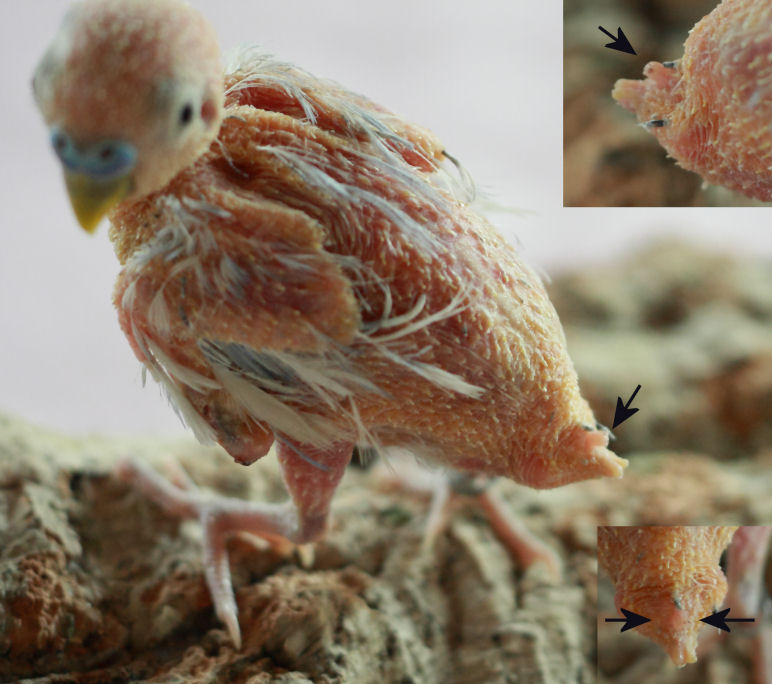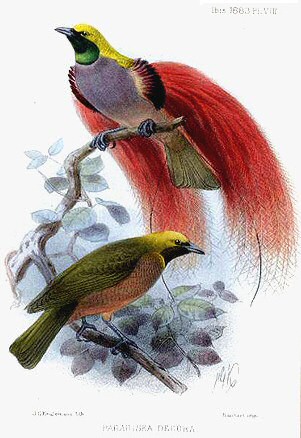|
Great Hornbills
The great hornbill (''Buceros bicornis''), also known as the concave-casqued hornbill, great Indian hornbill or great pied hornbill, is one of the larger members of the hornbill family. It occurs in the Indian subcontinent and Southeast Asia. It is predominantly frugivorous, but also preys on small mammals, reptiles and birds. It has been listed as Vulnerable on the IUCN Red List since 2018. It is known to have lived for nearly 50 years in captivity. Due to its large size and colour, and importance in many tribal cultures and rituals, the Government of Kerala declared it as the official Kerala state bird. It is also the state bird of Arunachal Pradesh. Taxonomy The great hornbill was formally described by the Swedish naturalist Carl Linnaeus in 1758 in the tenth edition of his ''Systema Naturae''. He placed it with the rhinoceros hornbill in the genus ''Buceros'' and coined the binomial name ''Buceros bicornis''. Linnaeus specified the location as China. The genus name is from L ... [...More Info...] [...Related Items...] OR: [Wikipedia] [Google] [Baidu] |
Carl Linnaeus
Carl Linnaeus (23 May 1707 – 10 January 1778), also known after ennoblement in 1761 as Carl von Linné,#Blunt, Blunt (2004), p. 171. was a Swedish biologist and physician who formalised binomial nomenclature, the modern system of naming organisms. He is known as the "father of modern Taxonomy (biology), taxonomy". Many of his writings were in Latin; his name is rendered in Latin as and, after his 1761 ennoblement, as . Linnaeus was the son of a curate and was born in Råshult, in the countryside of Småland, southern Sweden. He received most of his higher education at Uppsala University and began giving lectures in botany there in 1730. He lived abroad between 1735 and 1738, where he studied and also published the first edition of his ' in the Netherlands. He then returned to Sweden where he became professor of medicine and botany at Uppsala. In the 1740s, he was sent on several journeys through Sweden to find and classify plants and animals. In the 1750s and 1760s, he co ... [...More Info...] [...Related Items...] OR: [Wikipedia] [Google] [Baidu] |
Type Locality (biology)
In biology, a type is a particular wikt:en:specimen, specimen (or in some cases a group of specimens) of an organism to which the scientific name of that organism is formally associated. In other words, a type is an example that serves to anchor or centralizes the defining features of that particular taxon. In older usage (pre-1900 in botany), a type was a taxon rather than a specimen. A taxon is a scientifically named grouping of organisms with other like organisms, a set (mathematics), set that includes some organisms and excludes others, based on a detailed published description (for example a species description) and on the provision of type material, which is usually available to scientists for examination in a major museum research collection, or similar institution. Type specimen According to a precise set of rules laid down in the International Code of Zoological Nomenclature (ICZN) and the ''International Code of Nomenclature for algae, fungi, and plants'' (ICN), the ... [...More Info...] [...Related Items...] OR: [Wikipedia] [Google] [Baidu] |
Commissure
A commissure () is the location at which two objects wikt:abut#Verb, abut or are joined. The term is used especially in the fields of anatomy and biology. * The most common usage of the term refers to the brain's commissures, of which there are at least nine. Such a commissure is a bundle of commissural fibers as a nerve tract, tract that crosses the midline at its level of origin or entry (as opposed to a decussation of fibers that cross obliquely). The nine are the anterior commissure, posterior commissure, corpus callosum, Fornix (neuroanatomy)#Commissure, commissure of fornix (hippocampal commissure), habenular commissure, ventral supraoptic decussation, Meynert's commissure, anterior hypothalamic commissure of Gasner, and the interthalamic adhesion. They consist of fibre Neural pathway, tracts that connect the two cerebral hemispheres and span the longitudinal fissure. In the spinal cord, there are the anterior white commissure, and the gray commissure. ''Commissural neurons'' ... [...More Info...] [...Related Items...] OR: [Wikipedia] [Google] [Baidu] |
Uropygial Gland
The uropygial gland, informally known as the preen gland or the oil gland, is a bilobed sebaceous gland possessed by the majority of birds used to distribute the gland's oil through the plumage by means of Preening (bird), preening. It is located dorsally at the base of the tail (between the fourth caudal vertebra and the pygostyle) and is greatly variable in both shape and size. In some species, the opening of the gland has a small tuft of feathers to provide a wikt:wick, wick for the preen oil (see below). It is a holocrine gland enclosed in a connective tissue capsule made up of glandular acini that deposit their oil secretion into a common collector tube ending in a variable number of pores (openings), most typically two. Each lobe has a central cavity that collects the secretion from tubules arranged radially around the cavity. The gland secretion is conveyed to the surface via ducts that, in most species, open at the top of a papilla (nipple-like structure). Etymology Fro ... [...More Info...] [...Related Items...] OR: [Wikipedia] [Google] [Baidu] |
Sexual Selection
Sexual selection is a mechanism of evolution in which members of one sex mate choice, choose mates of the other sex to mating, mate with (intersexual selection), and compete with members of the same sex for access to members of the opposite sex (intrasexual selection). These two forms of selection mean that some individuals have greater reproductive success than others within a population, for example because they are more Animal sexual behaviour, attractive or prefer more attractive partners to produce offspring. Successful males benefit from frequent mating and monopolizing access to one or more fertile females. Females can maximise the return on the energy they invest in reproduction by selecting and mating with the best males. The concept was first articulated by Charles Darwin who wrote of a "second agency" other than natural selection, in which competition between mate candidates could lead to speciation. The theory was given a mathematical basis by Ronald Fisher in the e ... [...More Info...] [...Related Items...] OR: [Wikipedia] [Google] [Baidu] |
Casque (anatomy)
A casque is an anatomical feature found in some species of birds, reptiles, and amphibians. In birds, it is an enlargement of the bones of the upper mandible or the skull, either on the front of the face, the top of the head, or both. The casque has been hypothesized to serve as a visual cue to a bird's sex, state of maturity, or social status; as reinforcement to the beak's structure; or as a resonance chamber, enhancing calls. In addition, they may be used in combat with other members of the same species, in the gathering of food, or in thermoregulation. Birds Structure Casques are found in a number of species, including most hornbills, all cassowaries, the maleo, the horned guan, the helmeted guineafowl and several species of curassow. In most of these species, the casque is a bony extension of the or skull that is covered with a cornified layer of skin. However, in cassowaries, a foamy, elastic layer of collagen sits between the bone and the skin. Hornbill casques grow ... [...More Info...] [...Related Items...] OR: [Wikipedia] [Google] [Baidu] |
Hornbill
Hornbills are birds found in tropical and subtropical Africa, Asia and Melanesia of the family Bucerotidae. They are characterized by a long, down-curved bill which is frequently brightly coloured and sometimes has a horny casque on the upper mandible. Hornbills have a two-lobed kidney. They are the only birds in which the first and second neck vertebrae (the atlas and axis respectively) are fused together; this probably provides a more stable platform for carrying the bill. The family is omnivorous, feeding on fruit and small animals. They are monogamous breeders nesting in natural cavities in trees and sometimes cliffs. A number of mainly insular species of hornbill with small ranges are threatened with extinction, mainly in Southeast Asia. In the Neotropical realm, toucans occupy the hornbills' ecological niche, an example of convergent evolution. Despite their close appearances, the two groups are not very closely related, with toucans being allied with the woodpeckers, ... [...More Info...] [...Related Items...] OR: [Wikipedia] [Google] [Baidu] |
Ground Hornbill
The ground hornbills (Bucorvidae) are a family of the order Bucerotiformes, with a single genus ''Bucorvus'' and two extant species. The family is endemic to sub-Saharan Africa: the Abyssinian ground hornbill occurs in a belt from Senegal east to Ethiopia, and the southern ground hornbill occurs in southern and East Africa. Ground hornbills are large, with adults around a metre tall. Both species are ground-dwelling, unlike other hornbills. Also unlike most other hornbills, they are carnivorous and feed on insects, snakes, other birds, amphibians and even tortoises.Kinnaird Margaret F. and O‘Brien< Timothy G.; ''The Ecology and Conservation of Asian Hornbills: Farmers of the Forest''; pp. 20-23. They are among the longest-lived of all birds, and the larger southern species is possibly the slowest-breeding (triennially) and longest-lived of all birds. Taxonomy The genus ''Bucorvus'' was introduced, originally as a subgenus, by the French naturalist ...[...More Info...] [...Related Items...] OR: [Wikipedia] [Google] [Baidu] |
Malay Archipelago Hornbill
Malay may refer to: Languages * Malay language or Bahasa Melayu, a major Austronesian language spoken in Indonesia, Malaysia, Brunei and Singapore ** History of the Malay language, the Malay language from the 4th to the 14th century ** Indonesian language, the official form of the Malay language in Indonesia ** Malaysian Malay, the official form of the Malay language in Malaysia * Malayic languages, a group of closely related languages in the Malay Archipelago * Malay dialects and varieties, distribution of dialects and varieties of the Malay language spread mainly in Southeast Asia * Malay trade and creole languages, a set of pidgin languages throughout the Sumatra, Malay Peninsula and the entire Malay archipelago * Brunei Malay, a variety of the Malay language spoken in Brunei, distinct from standard Malay * Kedah Malay, a variety of the Malay languages spoken in Malaysia and Thailand * Sri Lanka Malay language, spoken by the Malay race minority in Sri Lanka * Kelantan–Pat ... [...More Info...] [...Related Items...] OR: [Wikipedia] [Google] [Baidu] |
Subspecies
In Taxonomy (biology), biological classification, subspecies (: subspecies) is a rank below species, used for populations that live in different areas and vary in size, shape, or other physical characteristics (Morphology (biology), morphology), but that can successfully interbreed. Not all species have subspecies, but for those that do there must be at least two. Subspecies is abbreviated as subsp. or ssp. and the singular and plural forms are the same ("the subspecies is" or "the subspecies are"). In zoology, under the International Code of Zoological Nomenclature, the subspecies is the only taxonomic rank below that of species that can receive a name. In botany and mycology, under the International Code of Nomenclature for algae, fungi, and plants, other infraspecific name, infraspecific ranks, such as variety (botany), variety, may be named. In bacteriology and virology, under standard International Code of Nomenclature of Prokaryotes, bacterial nomenclature and virus clas ... [...More Info...] [...Related Items...] OR: [Wikipedia] [Google] [Baidu] |





